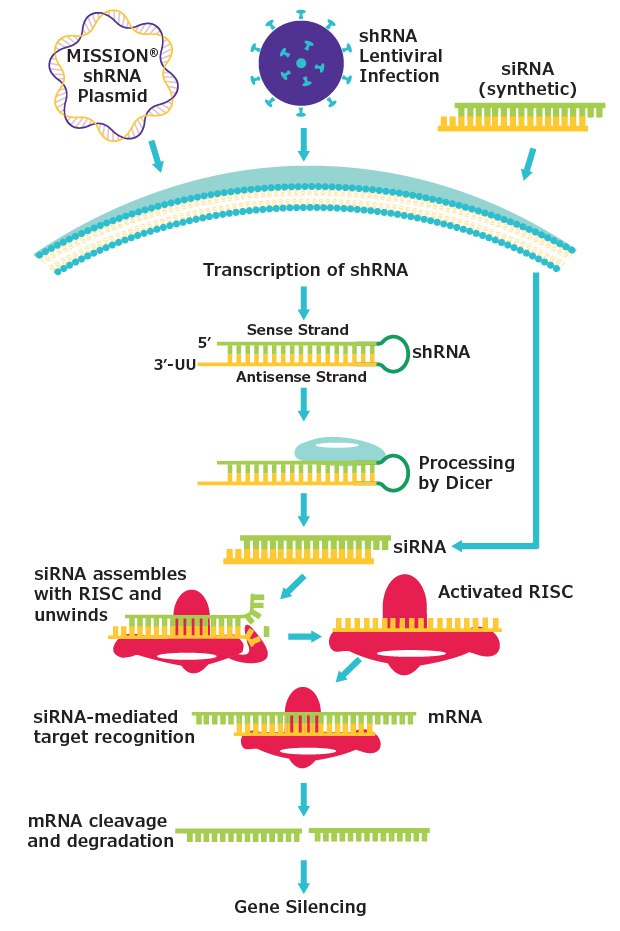shRNA Process and Diagram
What is shRNA?
Vector-based short hairpin RNA (shRNA) is a type of RNA interference (RNAi) technology leveraged to study the function of unknown genes. RNAi works by by silencing gene function to allow for the examination of the affected processes. It’s used for characterization of biological pathways through the identification of interactions between genes and genes and proteins. It also helps advance our understanding of the molecular mechanisms underlying disease states
How shRNA Works
Experimentally, RNAi can be induced using synthetic small interfering RNA (siRNA) duplexes or using shRNA expressed from either a plasmid vector or from genomic DNA following lentiviral-mediated integration. shRNAs can be delivered to cells by lipid transfection of plasmid vectors or transduction by lentiviral particles. The shRNA sequence is encoded in the delivered sequence, and expression of the shRNA in the nucleus is driven either by an RNA Pol III promoter (including U6 or H1) or an RNA Pol II promoter (such as CMV).
The shRNA is cleaved by the endogenous Dicer enzyme to generate the desired siRNA duplexes, which in turn associate with RISC. When shRNA is delivered using lentiviral vectors, the sequence encoding the shRNA is integrated into the genome and the knockdown effect is passed on to daughter cells, allowing for continued gene silencing.
RNAi can also be induced by synthetic siRNAs between 19-21 base pairs with 2 nucleotide overhangs. siRNAs can be delivered to cells via lipid transfection as well as other methods. Once inside the cell, they associate directly with RISC.
shRNA Process Diagram

Check out our range of shRNA clones and screens here
如要继续阅读,请登录或创建帐户。
暂无帐户?